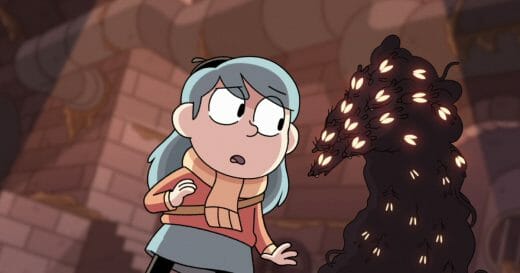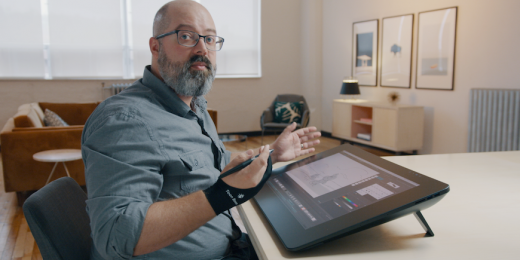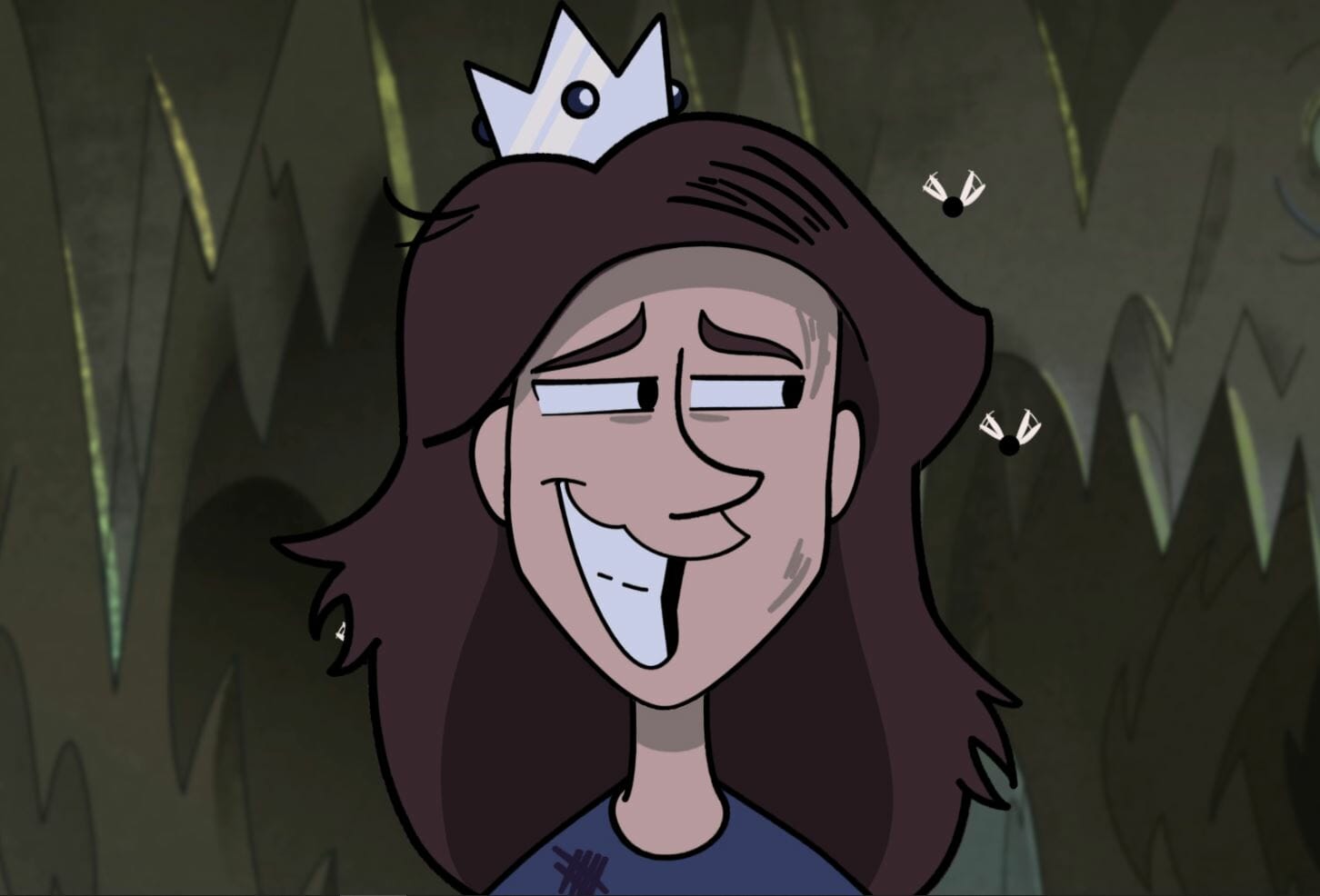
Mercury Filmworks, the Ottawa-based studio behind Netflix’s Kid Cosmic, launched a series of shorts showcasing the incredible animation talent that the studio fosters through their team. After enjoying the first four films, we had many questions, and were fortunate to have our questions answered by the creators themselves!
Royal Pain, by animator Rebecca Kartzmark, is a charming short that follows three friends as they overcome a calamitous encounter, on a journey fit for a hero. Condensed into a one-minute saga, the short, made in Toon Boom Harmony, showcases Rebecca’s expert character rigging and design, as well as her sharp, snappy sense of storytelling. Rebecca explains how she implemented techniques learned while working on iconic animated productions, like Hilda and Tangled, into her short.
Read our interview with Rebecca below, where she shares her process creating Royal Pain. From the inspiration behind her lovable characters, to the importance of good rigging for animation, and how to use cuts between scenes for comedic effect. Meet Richard, Gil and Michelangelo in the short below!
Hi Rebecca! Please give us a short introduction about yourself for our readers!
My name is Rebecca Kartzmark. I’ve been an animator at Mercury Filmworks for almost five years now. Actually, I was a third year student and I got the job while I was still in school, which was really nice. I always tell people, “I was not the best student, but I’m a good worker!”
What is the concept behind Mercury Filmworks’ shorts?
I know we’ve been trying to get the shorts program going for years now. From what I know, it’s thanks to Heath [Kenny] and a few others who got the thing rolling.
Mercury is helping us create our own shorts. Mercury doesn’t own any of it, so at the end it’s one hundred percent ours; Mercury can’t go and sell the idea to someone else! We had a contract to say: “This is one hundred percent yours. Mercury is just here to back you up and to support you.” And that’s really nice.
It’s good to own the rights to the cartoon that you made. I know a lot of people have been asking me that!
Do you have plans to develop the world and characters you’ve shown us in Royal Pain?
Yeah! I already have the basic plot, right down to three seasons — in my mind and on paper. I would love to make this into the series right now. But because the animation took so long, I’m just continuing the story through comics. It still takes a long time, but it is a lot easier than trying to plan an animation — because that one-minute animation took two months just to figure out.
There seems to be demand for it?
I would like to think so! I know a lot of people really enjoy the characters. I think what I loved the best is they didn’t have any voices in the short. And people could already tell what kind of personalities they had just from the music and from the acting themselves, which I was really happy about.
Can you talk us through the process of making Royal Pain?
So we had a meeting just to say what our rough idea was. I had an idea, but it was too ambitious for the two months that I was given. During the meeting, I was going through notes, and then I kind of figured out: okay, I can do this animation to be one-minute. The first part is just to figure out what you want to do. Then in one week I did the animatic.
I already had the rigs done, which was a huge help. The thing that was kind of slowing me down was the backgrounds. While I was doing the backgrounds, Mercury said they actually have someone in the background department that could help me. So that was what Mercury really helped me out with.
What inspired the characters in Royal Pain?
Years ago, these characters were roughly based off of my friends. So I had done a quick cartoon with these characters. They look totally different from what they are now. But as I was going through my stuff, I thought, “oh my, I really like these characters.” So I did a lot of redesigns.
They’re not so much based on my friends anymore. They start becoming their own people. For me: I love simple designs, and that’s what I was really going for. With animation, my favorite thing is really simplistic characters. I kept redesigning them to make them more and more simple, and distinguished from one another.
Almost like archetypes of characters?
Yeah. Because The King is the tall, thin one. Gel used to be thin, but I thought that was too similar, so I made him more built. Then Michelangelo, the Jester, was like a really short fat one. He’s my favorite character, just because he’s two little circles. He’s super fast to draw.
What advice do you have for finding inspiration?
It took me a while to actually really get into animation. College almost killed my love for drawing and for animation. During the first few years at Mercury — I love the studio, but it’s a really hard place to work. The quality was way up here; I think when I started, I was maybe down here.
I think for me it was only maybe this year or last year, during the pandemic, where my love for animation really got up there. I was starting to teach myself more about Harmony. I taught myself how to rig. Mercury gave me the basics, but they didn’t show me step by step. They just said: “Here, these are the basics! Go have at it.”
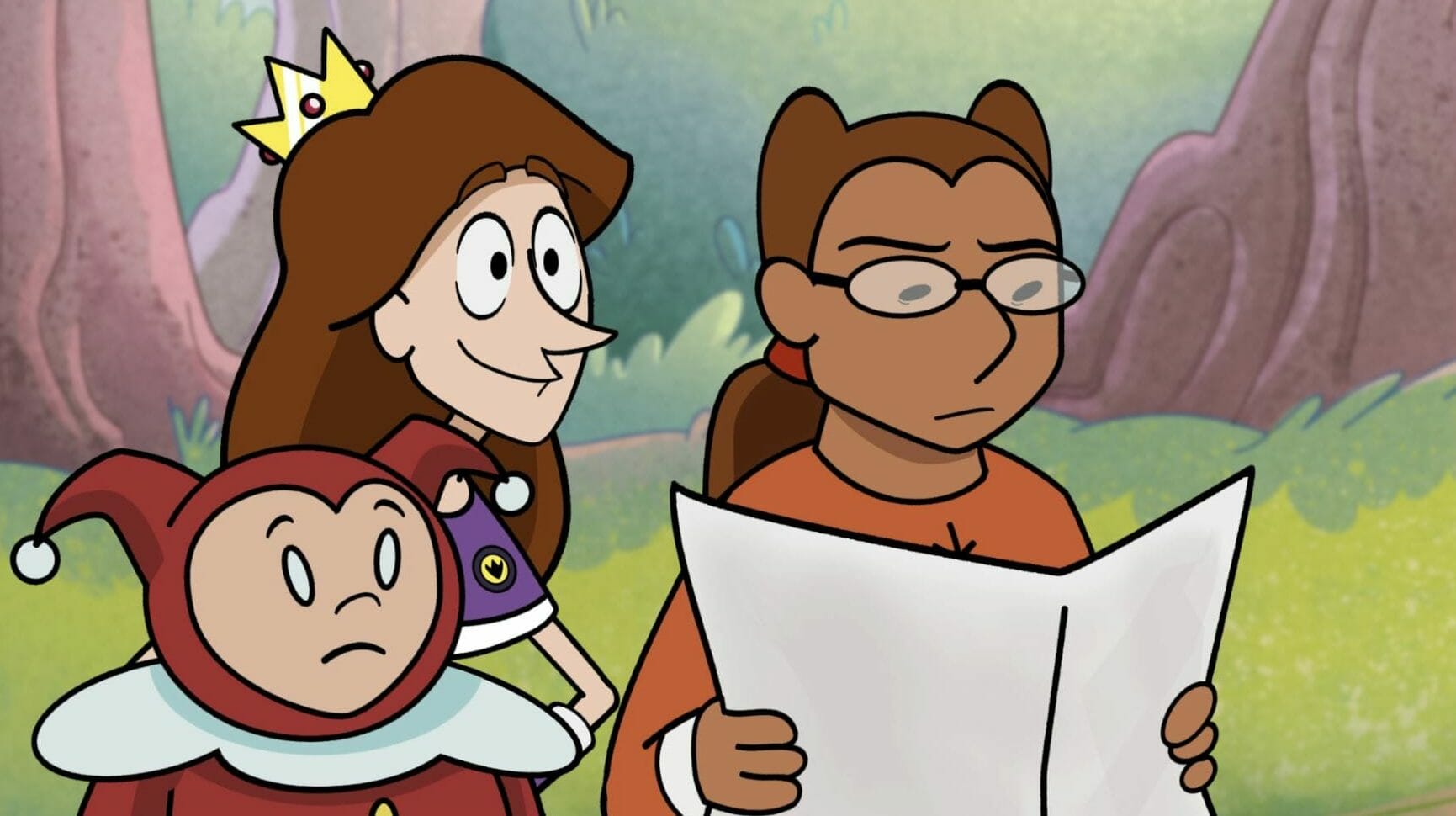
Did you find developing your skills was a good pastime in the pandemic?
I was starting to get into a rut with animation. When you get to a certain point in your career, where you’re not learning much more, and you wonder what you’re doing. I think pushing myself to create stuff really helped me get over that.
There was a point where I wasn’t improving. It was just kind of the same thing over and over again; which I know a lot of young artists will get into an issue where they’ll be stuck in ruts. I think learning how to do my own stuff in Harmony is what really got me going. It’s one thing to work for a studio and when you’re creating someone else’s project. But when it’s your own project, it’s like a whole different feeling. It’s like your little baby.
It must be great to get the opportunity to direct and ideate at this stage in your career.
Yeah! It really pushes you to see how far you can go. There are points in the shorts, where the burnout was starting to hit me. It did teach me to suck it up for the time being and keep pushing.
I think my issue when I was in my younger years as an artist is that I would start projects but I never finished them. I know a lot of people fall in that trap. This short really helped me, from start to finish, to have something one hundred percent completely done.
There’s so many talented people at Mercury, but I love seeing people’s own stuff! When someone shows me something that they made, it’s one of the most exciting things for me.
What techniques and software features can we see used in this process?
It was entirely done in Harmony! I’m the kind of artist who loves getting things done fast. That’s the reason I love using rigs in Harmony. I love to get stuff done fast. When something slows me down, that’s when my ambition starts to dwindle.
The three characters are all rigs. When I’m working on animation, I’m really following the beats of the music. With the rigs, I would pose them out first, and I would keep them following the beat. To make a good rig that works, it needs to have strong posing.
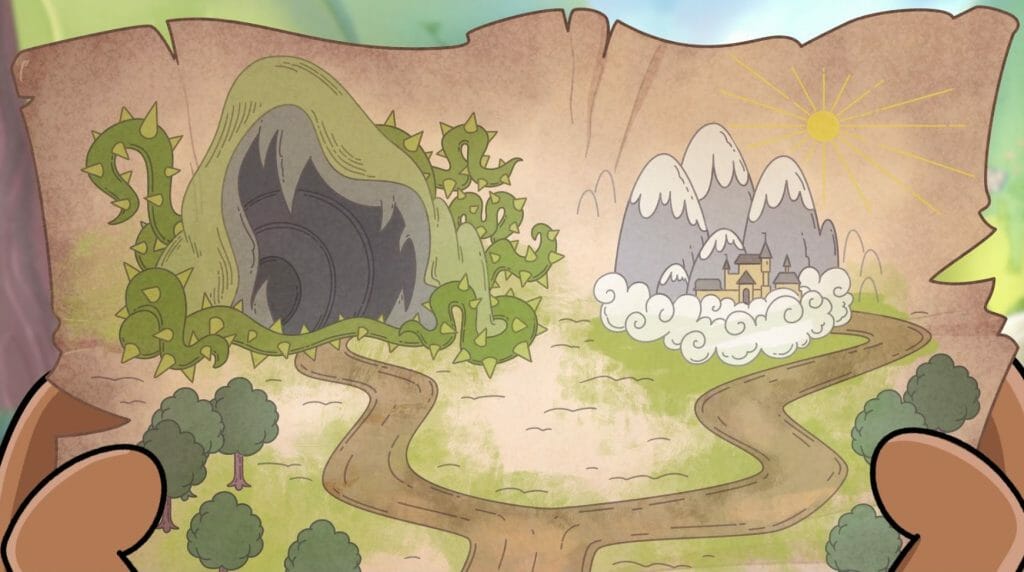
What is the dynamic between the three characters? How would you describe their relationship?
King Richard is the main character and he’s the one that’s exiled because he never learned how to rule, or was taught any basic life skills. Michelangelo is his childhood best friend. They’ve been friends since he was a kid. It’s Gil who is kind of an oddball: He’s the chronicler that keeps track of everything, and the reason he’s with the group is he’s the only one that can keep things organized.
People told him he has to go with Richard because otherwise, he’s not going to know what to do and he needs someone there to help him. Gil didn’t want to go, so the relationship between Jill and Richard is very, very tense at first. That’s why in the animation, Gil knows how to read the map, and he knows where to go. But since King Richard is the king, he’s like: “No, I want to go this way.”
Michaelangelo is the middle ground. He gets along with Richard and Gil; he’s the peacemaker, in a sense. He says: “Let’s give Richard a chance! Let’s see if he can do this on his own!” Then we quickly learn that he doesn’t know what he’s doing. King Richard doesn’t admit that he’s wrong, but hands the map back.
How did you arrive at the aesthetic and art style of Royal Pain?
I know a lot of people see my art style and immediately say it looks like the style of Hilda. I worked on season two. I loved the pencil textures they use, and then I figured out how they did it. So I thought, “I’m going to use that!”
Hilda’s animation, I find, is simple, but the posing and acting is really strong. That’s what I was really going for. The first show I worked on was Tangled, and that had really heavy character animation, so it’s super flowy. I thought, I like this, but it’s not necessarily the animation I would go for.
What draws you to these fantasy narratives? Like Hilda or Royal Pain?
I don’t know. I think I just have more fun with those era because there’s gonna be a lot more fantasy stuff. My friends and I were really trying to figure out what era they should be from. I thought it can’t be like super dark, medieval times, because I was looking at the clothing, and I thought I’m not a big fan of that.
I was looking more like maybe the 1600s, and I thought now it’s starting to get a little too modern. So it’s really in-between. Part of me thought: “This is a fantasy world. This isn’t real. This isn’t based on our Earth’s dimension. This is a totally different place.” I know for a lot of young artists, I think they get stuck with trying to stick to a specific formula.
Can you explain how you used light and atmosphere in the short to create drama?
As I work for Mercury, I pick up stuff. One of the things I pick up is staging of your characters. With Hilda, there were a lot of shots where it’d be this shot, and then it’d be like a next shot, and the next, and then the shot after that, the character is still in the same spot. You have to carefully plan, from the previous scene, what is important to that scene.
I wanted to have that quick cut. Because I thought, “that’s what’s gonna make people laugh.” So I had the one shot where they’re walking into the cave, but then I had to open up another scene with the flies and the scary cave.
What are some other ways you use Harmony in your role at Mercury Filmworks?
Since I started at Mercury, I’ve only used Harmony. I’ve run into issues in the past with other software, with crashing and stuff. I’m not sure why we use Harmony, but I love Toon Boom.
It’s a little scary for a new person, because when you open it you think, “what is all this?” But it’s the same as learning any program. I know a lot of people who have used other programs, and then when they try Harmony, they never go back.
Where can fans of the royal pain characters find more comics from the series?
So I do have a Twitter account. I will make a link to where the comics are! I also have a server on Discord where me and other people share and promote our own stuff. I am also there to answer any questions about Royal Pain or about animation. It’s there if people want to join!
https://t.co/oAbmtY2cLm
— Rebecca ? (@Kartzmark) November 15, 2021
If anyone is interested, Join my Royal Pain discord server!
Here I post my animations, encourage others to post their own art, and answer any questions you might have about the animation industry, or about my projects! pic.twitter.com/gwb9MwE459
- Seeking the successor to this story? Read Rebecca’s comics in the world of Royal Pain here.
- Want to see more behind-the-scenes material? Send Rebecca a message on Twitter to request a link to her Discord.
- Ready for more shorts from the crew at Mercury Filmworks? Be sure to visit the studio’s YouTube channel.


